Polystyrene beehives
Honey Paw polystyrene beehives are a result of over 20 years of beekeeping. Designed by beekeeper for beekeepers.
Hives are tested and proven to work in all weather conditions (Finland’s harsh winter and hot summers). Higher insulation capability works on both cold and hot weather countries / areas keeping hive warm during the cold winter and keeping the excess warmth out of the hive in hot temperatures. Honey Paw’s polystyrene bee hive boxes are light weight but designed to last for many years of use. Hive material density is over 100 kg / m³ which makes it by far the thickest on the market
Hive standards
We are producing multiple different hive standards. See all hive products here. Below is few examples of our products.
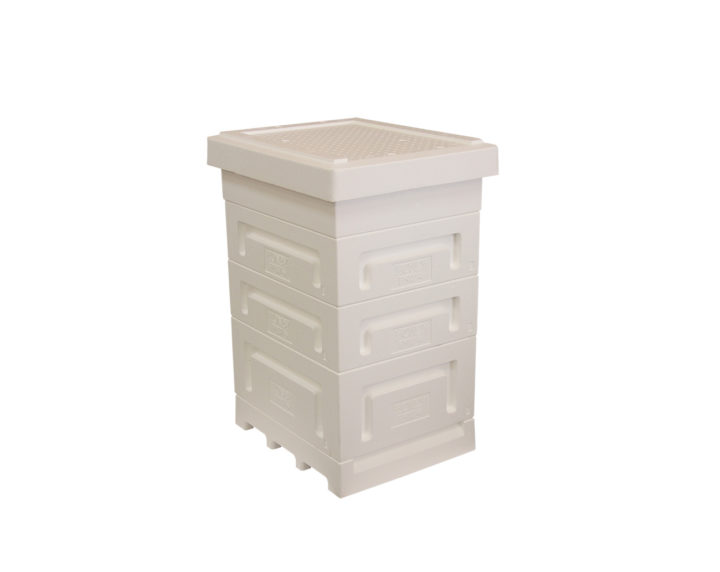

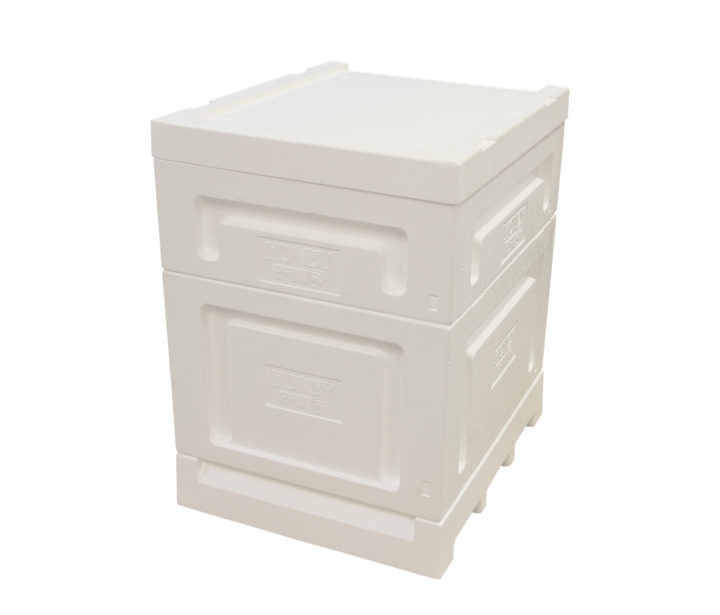
All hive types are possible to modify different accessories. Feeders, bottoms and roofs.

Hive bodies
Hive bodies comes in 10 frame capacity and are standard sizes. Smooth edges without any complex profiles offer full compatibility with other Honey Paw hive parts. Boxes are lightweight and easy to handle, still offering high durability against hive tools and years of use.
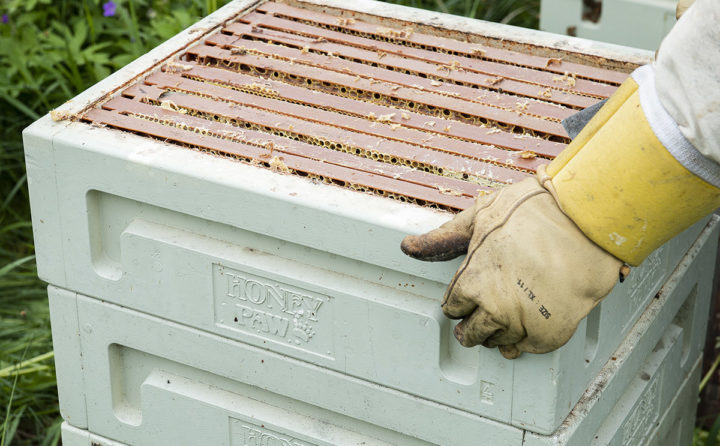
Hive Roofs & Bottoms
Honey Paw hive roofs and bottoms are suitable for beekeeping around the world. Roofs and bottoms are designed to meet the requirements of every season. No matter if you are living in the hot temperature area or place where the climate changes radically when season changes, we have something to offer for everyone. In bulk supply, roofs and bottoms are packed tight on a pallet to ensure low freight cost per unit. Buying full pallets ensures you also the cheapest possible price.
Multifunctional hive roof for dynamic and changing climate keeping the beehive warm especially when wintering and offering ventilation possibility when turned upside down.
Honey Paw beehive roof is 45 mm thick in the middle and that the beehive stays warm no matter what. Roof has overhanging outside edges to provide protection against weather. If the hive temperature should rise too high, the roof can be turned upside down, forming an exit tunnel for warm air inside of the beehive.
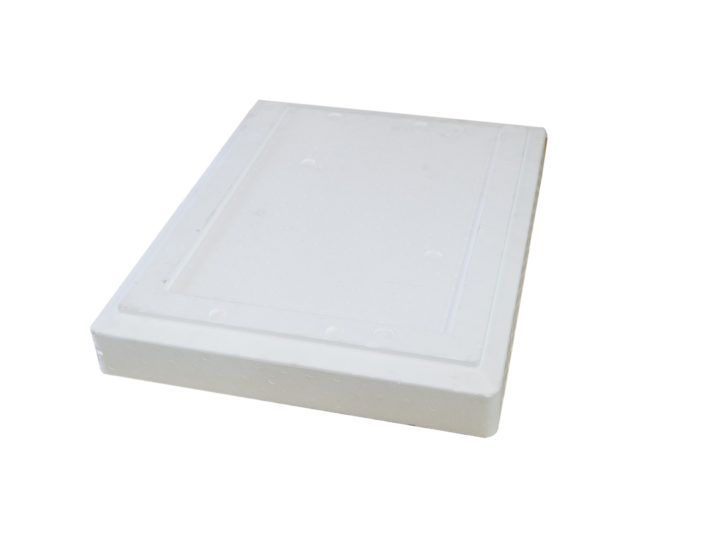
For beekeepers who migrate hives a lot we can recommend our migratory roof. This roof has tabs which secures bodies tightly to roof keeping bees inside hive when moving them. Extra grooves enables use of hive straps.
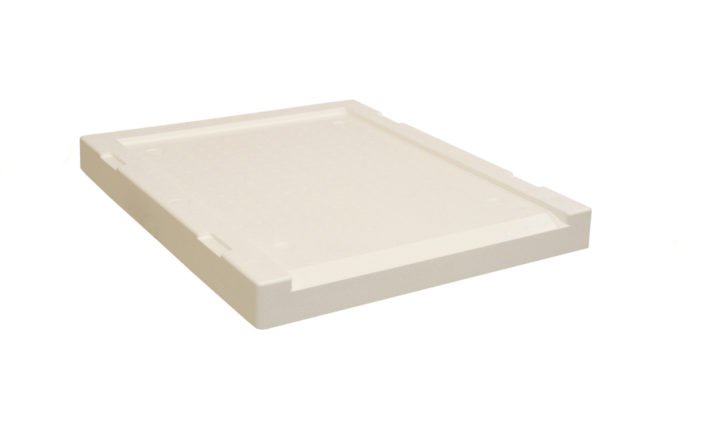
Beehive bottoms for every beekeeper seeking for best results. Honey Paw offers three different type of polystyrene beehive bottom: Bottom with mesh, Thermal bottom and hive bottom with ventilation board.
All the hive bottoms are designed in a way that the hive temperature remains optimal without excessive inside moisture (preventing mold forming inside of the beehive) and are functional in use and easy to work with in every way.
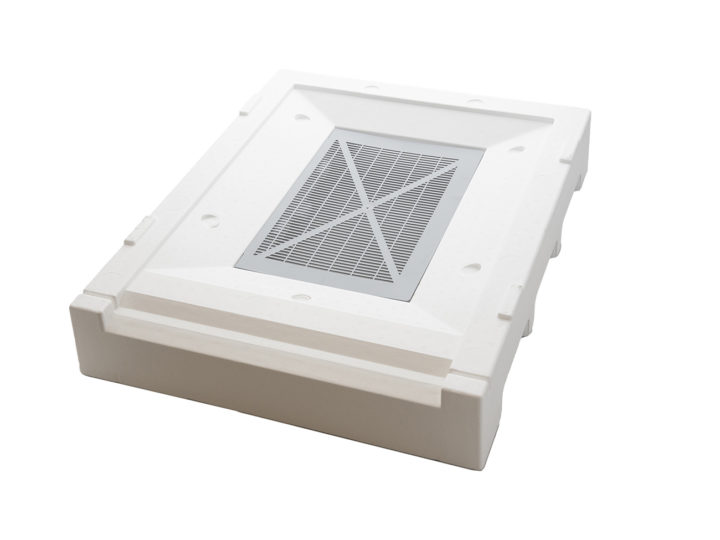
Hive bottom with mesh
Honey Paw hive bottom with mesh is supplied with either plastic or aluminum mesh. Bottom is same size as the Honey Paw’s beeboxes and the entrance is made so that the there is no need for entrance blocks or mouse guard. Bottom with mesh should be placed a little above of the ground (i.e. on a wooden pallet) so that there is a “open space” directly under the hive bottom. As an option you can close the bottom opening by separate closing board. The hive entrance should be blocked only when moving the hive or when splitting the beehive.
Bottom with ventilation board
This all-around hive bottom can be used whole year. Bottom board has two possible positions: open and closed. By turning the bottom board you either keep the hive ventilated from the edges (open position) or the board can be turned (closed position) so that the bottom hole is completely closed to make sure that the hive stays warm. This beehive bottom has plastic mesh under the reversible polyurethane board. Hive bottom has been noticed to reduce the brace comb (or burr comb) being formed under the brood chamber frames. When wintering the bees will form the cluster “bee ball” directly on the warm styrofoam board. Bottom with ventilation board has an option to combine with Honey Paw’s pollen trap.
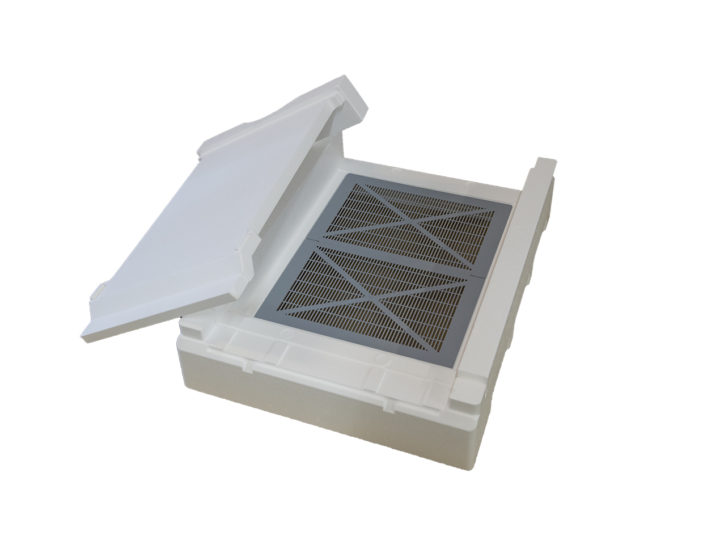
Thermal beehive bottom
Polystyrene thermal beehive bottom is like normal wooden bottom, except keeping the hive much warmer. Honey Paw’s thermal hive bottom can be used with polystyrene beeboxes or wooden ones. Hive bottom entrance is 3 cm high and will work as ventilation intake vent, but in some cases it is recommended to add an additional ventilation hole under the hive roof.
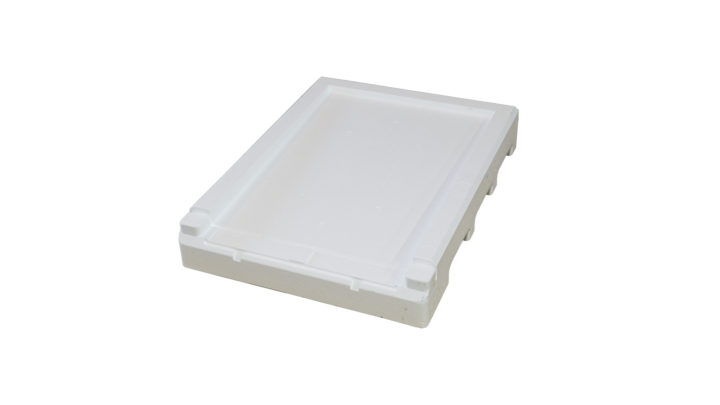
Hive Top Feeder
Honey Paw Beehive Top Feeder with 15 L capacity.
Honey Paw designed the hive top feeder to make feeding of the bees very effortless. Feeding can be done without disturbing the bees just by opening the hive top and adding liquid sugar. Hive feeder has an internal access from inside of the hive. Bees climb through the tunnel entrance under the clear plexiglass to feed. Feeder has been designed to offer very easy access by wide enough entrance and providing “bee steps” to help the climbing.
See through plex-glass is placed so that the air flow or daylight doesn’t disturb the hive and providing inspection window for the beekeeper to observe. Feeders inside bottom is slightly tilted by material thickness so that the feeder will empty even if the beehive is not adjusted straight on the ground (the side inside of the beehive is completely even so that no brace comb will form). Polystyrene beehive feeder should be painted also from inside to help keeping the feeder clean.
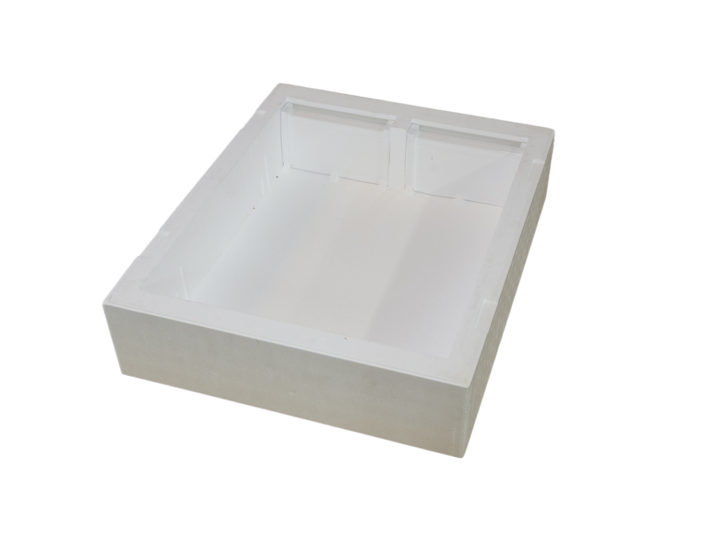
Specifications:
– Capacity of 15 L (should be more than enough)
– Warm and low weight polystyrene feeder
– Polystyrene density over 100 kg / m3
– Protective plexiglass prevents from bees devouring the feeder
– Two separate entrances when used “double nuc method or Palmerized hive” with 4 frame nucs
Pollen Trap
Honey Paw Pollen Trap makes sure that the pollen is effectively collected, safely stored and with easy access
Honey Paw provides integrated pollen trap for Honey Paw bottom with ventilation board. Pollen trap replaces the ventilation board but without blocking the hive ventilation. Pollen trap doesn’t changes the hive entrance place so the bees will know immediately how to get in. When entering the hive bees go through the entrance pipes in front of the hive.
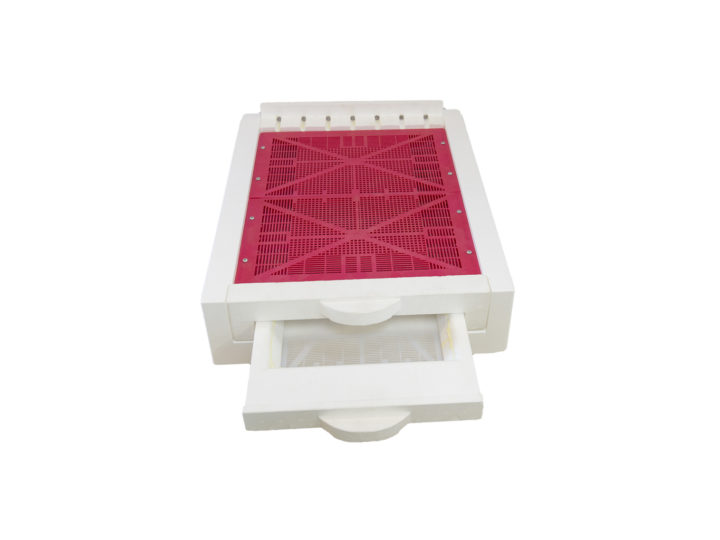
Pollen is stored under the hive into the pollen drawer which can be accessed from behind of the beehive. Since the pollen is stored under the hive, it stays secure from external weather conditions (rain). Honey Paw pollen collector doesn’t cause swarming or disturb the bees like some of the external pollen collectors do.
Nucs
Honey Paw nucleus beehives provide the best thermal performance for small colonies.
Nucleus hive is small beehive that can be used various ways. Nucs comes in 4 frame capacity and can be used when splitting the hive, queen rearing or wintering “spare queens”. Nuc boxes are made of same high quality material as the normal size Honey Paw beehive boxes ( expanded polystyrene “EPS” with density of over 100 kg / m3).
Complete nucs include bottom, box for frames, nuc feeder and roof. Honey Paw nuc hives has special interlocking small notches on the sides helping the parts stay in place and when moving nuc hives. This doesn’t prevent using nuc boxes together with normal 10 frame boxes (“double nuc hive or Palmerized hive”). As an advantage compared to small queen rearing boxes, Honey Paw’s 4 frame nucs doesn’t get “robbed” as easily as smaller and weaker ones.
Nuc beehive boxes are provided flat packed and are assembled in the same way as the full size beehive body.
Honey Paw’s polystyrene nucs can be used in double nuc beehive: 2x 4 frame Nuc = 10 frame normal beebox
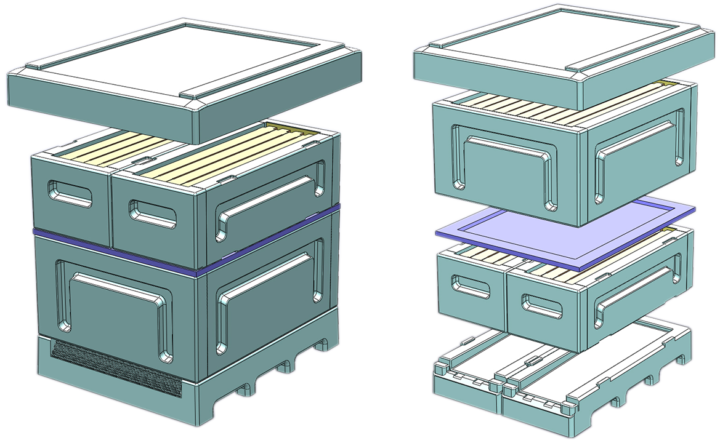
Double Nuc beehive can bee formed either using normal size beehive bottom or with two nucs hive bottoms. With double nuc hive you can use Honey Paw’s 15 L feeder and beehive roof to cover the whole double nuc beehive complete. Colored sheet between the boxes demonstrate the use of queen excluder.
Would you like to get more information about our polyhives? Contact us with the form or find out more here.
